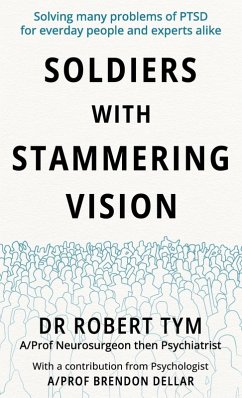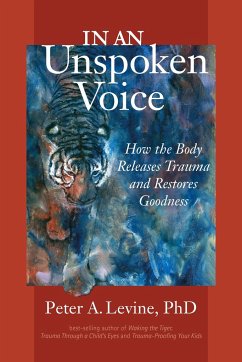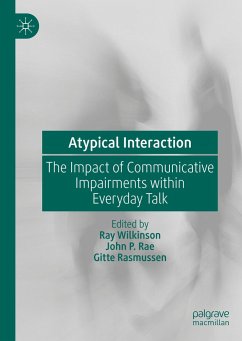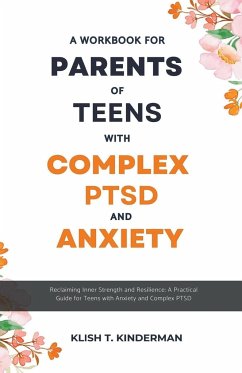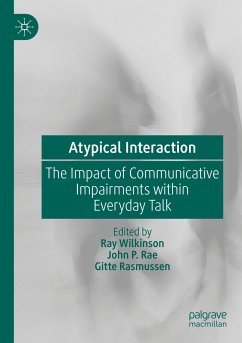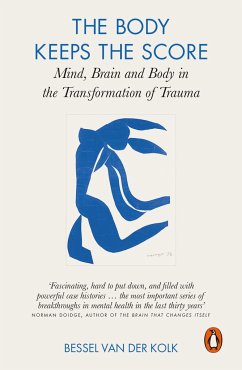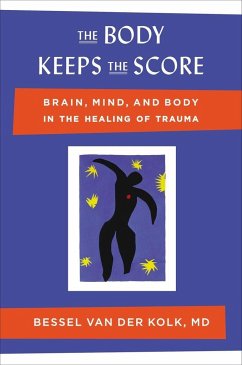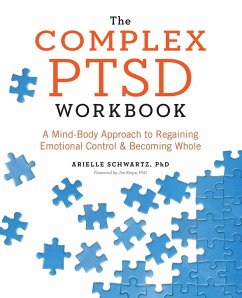
Soldiers With Stammering Vision
Solving Many Problems of PTSD For Everyday People and Experts Alike
Versandkostenfrei!
Versandfertig in 1-2 Wochen
14,99 €
inkl. MwSt.

PAYBACK Punkte
7 °P sammeln!
Everyone has heard of PTSD - well, almost everyone. This isn't surprising since one in fourteen of us all in the Western World and perhaps elsewhere has PTSD. Not surprisingly, many ex-soldiers have or have had PTSD, as have many other combatants, first responders and the helpless victims caught in collateral damage. But not forgetting that girls and boys and ordinary everyday men and women get PTSD in the endless traumas of everyday living. But what, exactly, is PTSD? This book explains what's newly known and makes more sense of PTSD. The book is written for the everyday person and the mental...
Everyone has heard of PTSD - well, almost everyone. This isn't surprising since one in fourteen of us all in the Western World and perhaps elsewhere has PTSD. Not surprisingly, many ex-soldiers have or have had PTSD, as have many other combatants, first responders and the helpless victims caught in collateral damage. But not forgetting that girls and boys and ordinary everyday men and women get PTSD in the endless traumas of everyday living. But what, exactly, is PTSD? This book explains what's newly known and makes more sense of PTSD. The book is written for the everyday person and the mental health experts at any level of expertise: The new evidence that suggests what has gone wrong in the brain in PTSD. Why do some people get PTSD badly and others not so badly? Why do some get better on their own and others have it life-long? Why do some get better with some treatments, like EMDR, and for others the same treatments do nothing? In some families PTSD appears inherited, but how can that be? Why do some people appear more likely to get PTSD than others? Why do our different genetic make-ups appear to play such a big part in PTSD? And lastly: Whatever has stammering vision of soldiers got to do with PTSD? The simple answer to that is: Vision has a great deal to do with PTSD: there is a simple visual test for PTSD that everyone can test for themselves--- thanks to those soldiers. PTSD is complicated. This book endeavours to explain it to the ordinary everyday person, as well as to the experts. All this new and unexpected clinical evidence came from a 30-year-long clinical investigation.



